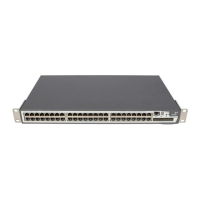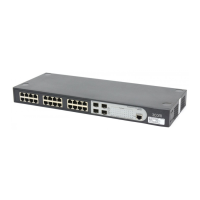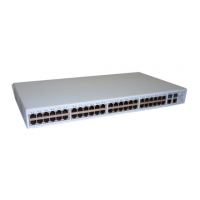1-15
The authentication mode is
publickey
Configuring an SSH Client that
Runs SSH Client Software
Configuring an SSH Client
Assumed by an SSH2-Capable
Switch
Whether
first-authentication is
supported
—
Configuring an SSH Client
Assumed by an SSH2-Capable
Switch
Configuring an SSH Client that Runs SSH Client Software
A variety of SSH client software are available, such as PuTTY and OpenSSH. For an SSH client to
establish a connection with an SSH server, use the following commands:
Complete the following tasks to configure an SSH client that runs SSH client software:
Task Remarks
Generating a client key
Required for publickey authentication;
unnecessary for password authentication
Specifying the IP address of the Server Required
Selecting a protocol for remote connection Required
Selecting an SSH version Required
Opening an SSH connection with password
authentication
Required for password authentication;
unnecessary for publickey authentication
Opening an SSH connection with publickey
authentication
Required for publickey authentication;
unnecessary for password authentication
z For putty, it is recommended to use PuTTY release 0.53; PuTTY release 0.58 is also supported.
For OpenSSH, it is recommended to use OpenSSH_3.1p1; OpenSSH_4.2p1 is also supported.
Any other version or other client, please be careful to use.
z Selecting the protocol for remote connection as SSH. Usually, a client can use a variety of remote
connection protocols, such as Telnet, Rlogin, and SSH. To establish an SSH connection, you must
select SSH
z Selecting the SSH version. Since the device supports SSH2.0 now, select 2.0 or lower for the
client.
z Specifying the private key file. On the server, if public key authentication is enabled for an SSH
user and a public key is set for the user, the private key file corresponding to the public key must be
specified on the client. RSA key pairs and DSA key pairs are generated by a tool of the client
software.

